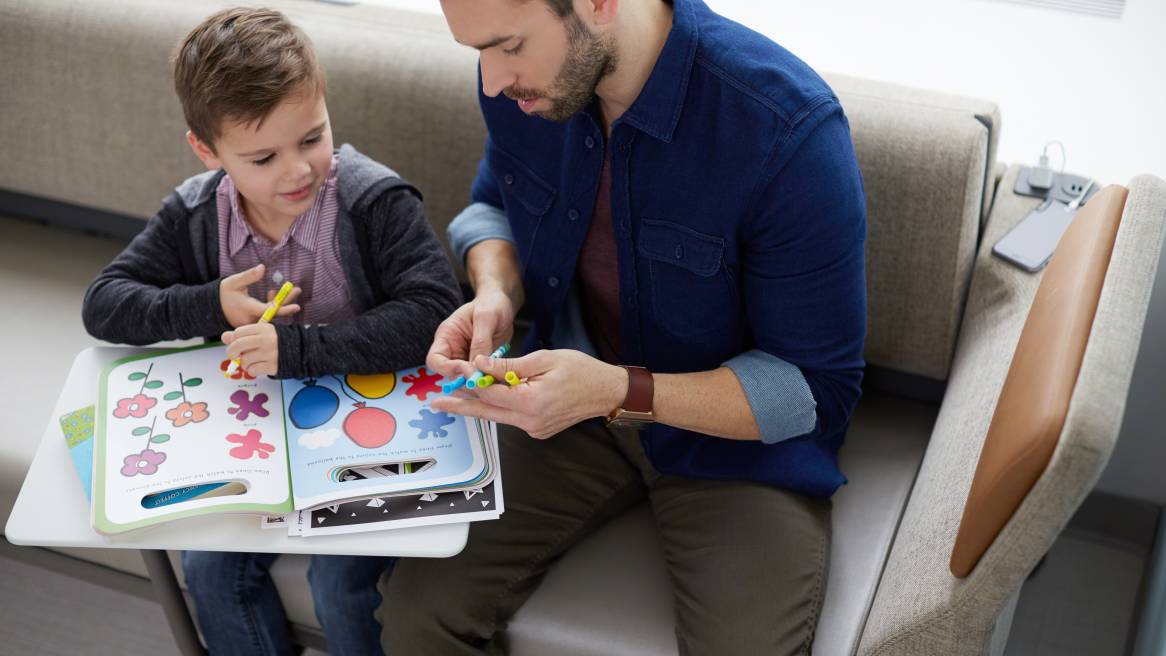Designing Effective Pediatric Care Spaces
Six design principles to improve the healthcare experience for children and their families
Pediatric healthcare experiences often involve anxiety and uneasiness. Waiting in fear of the unknown. These are natural human reactions, and they can be especially pronounced among children, adolescents and the adults who accompany them.
Many of the places where pediatric care occurs today can do more to mediate the anxiety and discomfort underlying the experience. Understanding user needs is a critical starting point for achieving effective pediatric spaces.
Steelcase Health recently completed a new study to learn more about the special needs of pediatric patients. This study posed a fundamental question: How can healthcare environments support children, adolescents and their parents through engaging and comforting spaces?
Identifying Three Important Needs
From this research, Steelcase Health identified three primary needs of pediatric healthcare patients:
1. Children need to have their curiosity engaged in unfamiliar settings.
Unfamiliar settings are a major stressor to pediatric patients. Research shows children can experience a heightened sense of helplessness, coupled with fear and the possibility of pain, in healthcare settings that feel strange and foreign to them. Not only are these emotional responses troublesome to patients and their parents, they can also cause delays in examinations, requiring more time to complete exams and treatments and reducing patient satisfaction.
Research shows engaging young patients in their surrounding environment can help minimize anxiety and promote a sense of calm. Exploration provides choices, and choices provide a sense of control.
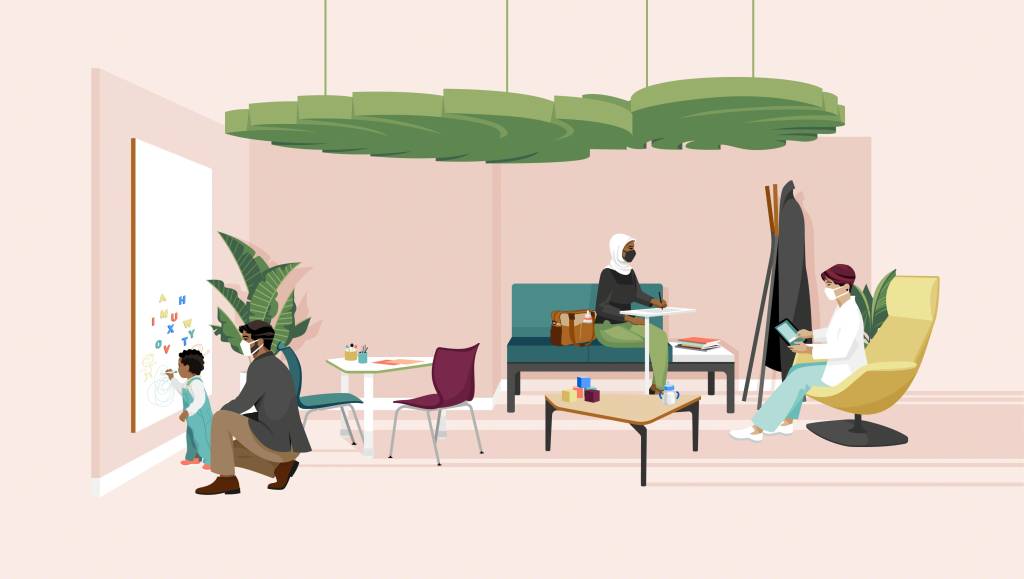
2. Children need movement and sensory experiences to reduce stress.
Staying still for any length of time is unnatural for children. In contrast, active play provides compelling therapeutic benefits — less anxiety, a sense of mastery and enhanced understanding of their surroundings. In fact, research shows that high amounts of play are associated with low levels of cortisol, the hormone neurologists have described as nature’s built-in alarm system.

3. Children need environments tailored to their abilities and ages.
Studies show that aesthetic choices can influence whether patients choose to use social spaces in healthcare settings. What’s more, findings indicate children as young as seven years old are critical of spaces that appear too “babyish.” Not surprisingly, teens engage in curiosity, movement and play much differently than younger children. So, while primary colors, small chairs and puzzles may be just right for toddlers, teens and preteens are more likely to prefer adult-sized furniture that supports lounge postures and access to power.
Variety is key. A space that’s too generic can be as ineffective as one that’s targeted to just one age group. In either case, a one-size-fits-all approach falls short.
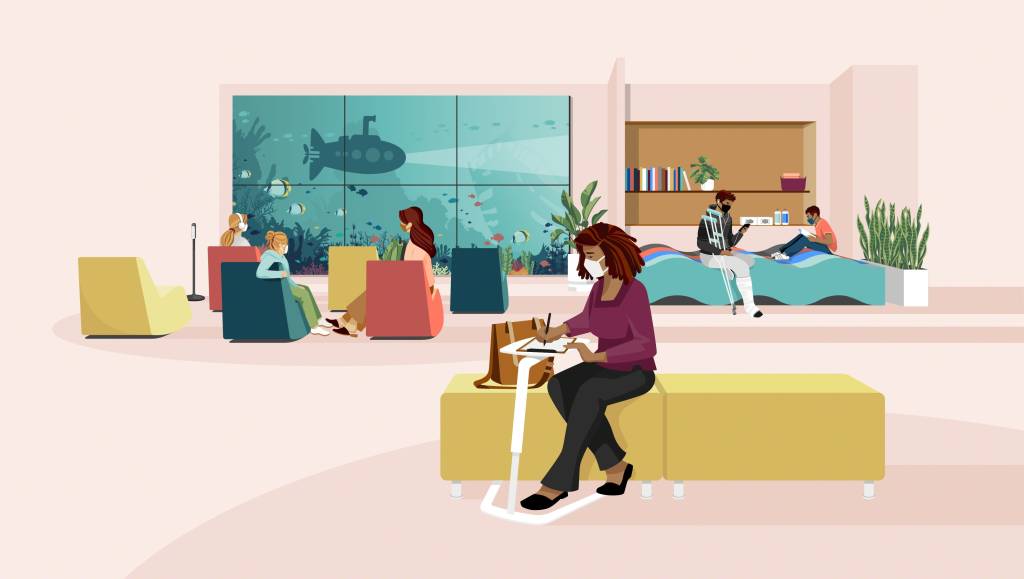
“The research made it very clear to us — new thinking is necessary to better support pediatric patients and their families,” says Seth Starner, Advanced Explorations leader at Steelcase Health. “Children and their families should be better supported, and they can be. Spaces that evoke curiosity, encourage movement and are tailored to a range of ages are engaging and comforting, which greatly improves the experience. This, in turn, can result in measurable value for the organization.”
Six Design Principles
To help organizations and designers move forward, Steelcase Health applied its learnings from research to formulate six design principles for creating innovative and effective pediatric healthcare spaces.
1. Encourage play and positive distraction.
Incorporate furniture that encourages curiosity through mobility – easy-to-move chairs and small tables or stackable ottomans that children can arrange and rearrange to create a space of their own or a space to share.
In addition, including Internet access and other interactive resources and devices, especially hands-free media, provide opportunities for positive distraction and engagement.
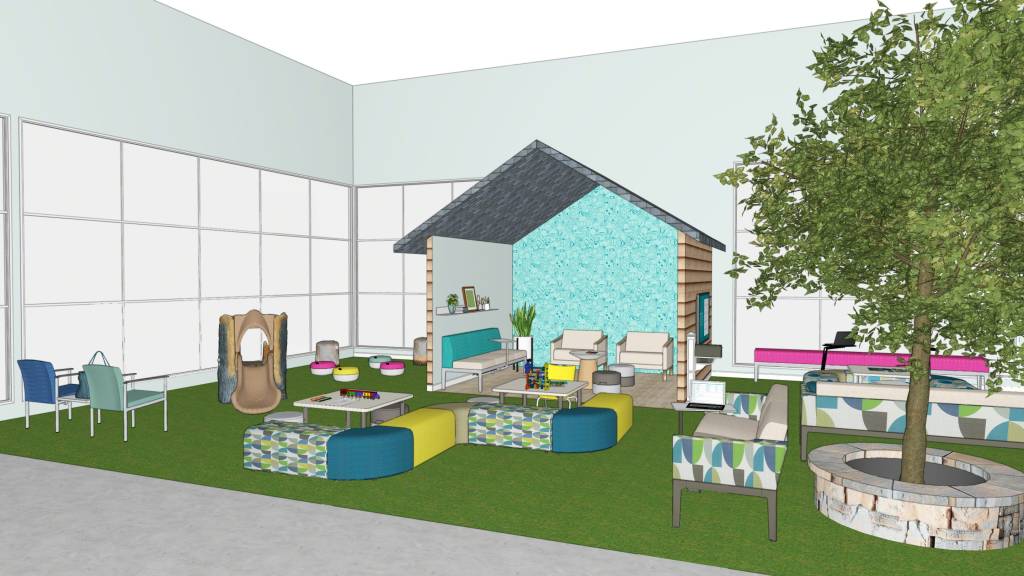
2. Design for a variety of ages.
Age-appropriate and size-appropriate furniture helps children and adolescents feel welcomed and comfortable. Intentionally including spaces and furniture for adult family members extends the welcoming and comfort to them, too.
Activity zones should be tailored to different ages, abilities and characteristics. For example, provide distance or shielding between spaces to sit quietly and read with a parent or use a personal device and spaces where more lively activities occur. For adults accompanying young patients, comfortable seating, space for personal belongings and access to power are fast-becoming fundamental expectations, often far more appreciated than an always-on TV or a magazine rack.
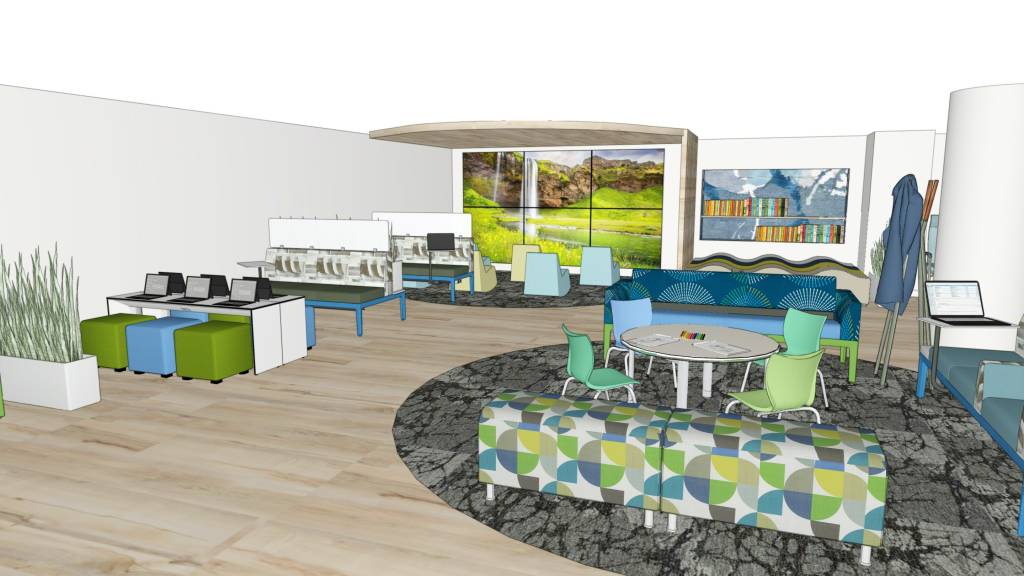
3. Incorporate natural elements.
Exposure to nature through garden spaces, atriums, plants and natural light lifts people’s moods. It also encourages children’s curiosity and movement, helping to minimize anxiety.
In addition to direct experiences of nature, biophilic design can also suggest or reflect nature in more subtle ways. For example, floor tiles that mimic the flow of a river and nature-inspired artwork can provide wayfinding as well as wellbeing benefits.
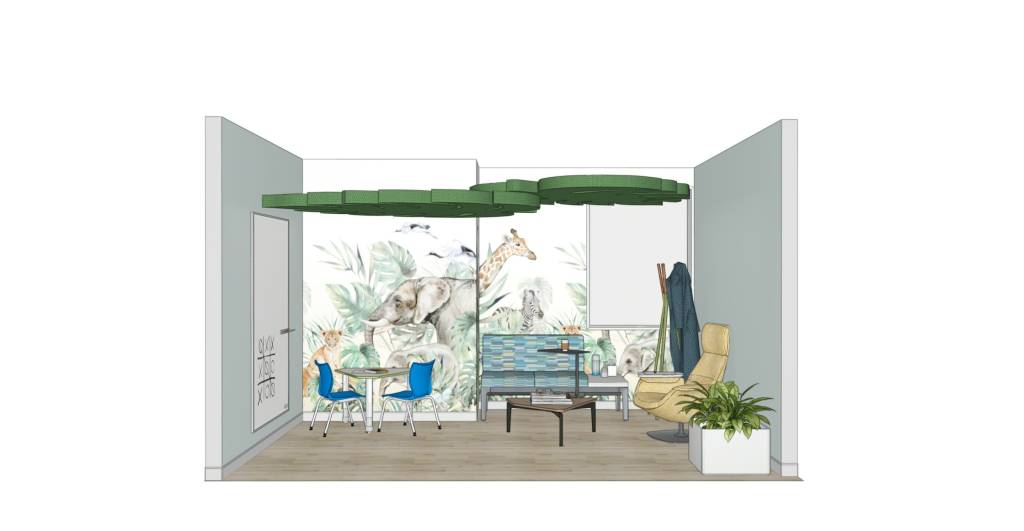
4. Create neighborhoods.
It’s important to design for a balance between maximizing space efficiency and ensuring patients and families feel welcomed and comfortable.
Smaller spaces can be less overwhelming and feel more private and personal to pediatric patients. However, when that’s not possible due to floorplate constraints, creating a variety of settings within a larger area can meet needs for both privacy and community, similar to how a city neighborhood typically includes private residences, gathering places and shops.
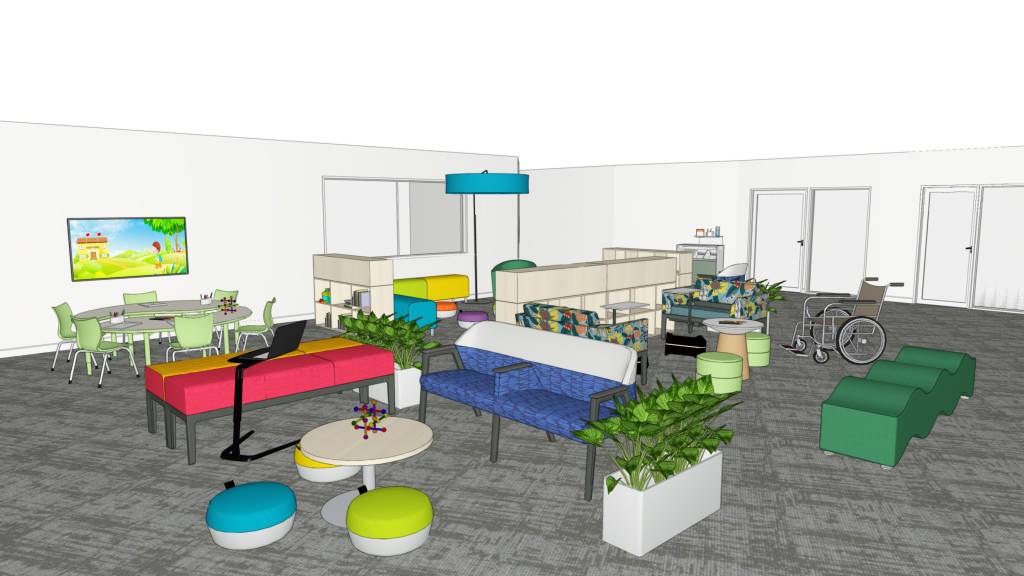
5. Demonstrate safety.
Mitigating the spread of illness continues to be a paramount concern. Communicating an organization’s safety and cleaning practices and providing easy access to sanitation stations is essential.
In addition, using furniture elements such as low shelving units to create purposeful separation and orienting seating appropriately can help decrease uneasiness. Unobstructed sightlines to clinicians, staff and technology plus clear wayfinding makes people feel in control and prevents unnecessary wandering and exposure.
6. Be flexible.
More than ever, flexibility is a value-add for the patient experience as well as the organization. Flexibility gives organizations the advantage of being able to respond to changing needs. At the same time, it empowers pediatric patients and family members to change furniture and environments to support their needs.
Versatile furniture, such as large tables in waiting areas for working or playing games or sofas for lounging or napping, invites diverse uses “as is.” Meanwhile, modifiable furniture, such as adjustable chairs, sit/stand tables and easy-to-move stackable ottomans, allows users to “make it theirs” for as long as needed.
Gain inspiration
See how our six design principles can be applied to pediatric waiting and consult spaces. Take the next step with these planning ideas. You’ll find a variety of ideas and layouts that demonstrate how to create effective spaces that support both pediatric patients and their families.
Here to Help
Connect with one of our healthcare experts to learn more about our insights and solutions for pediatric environments.

